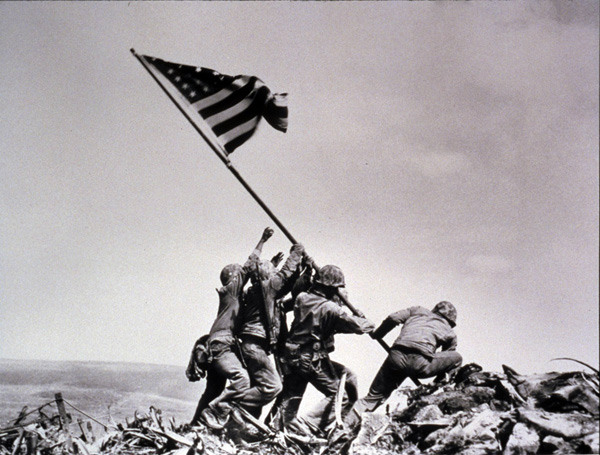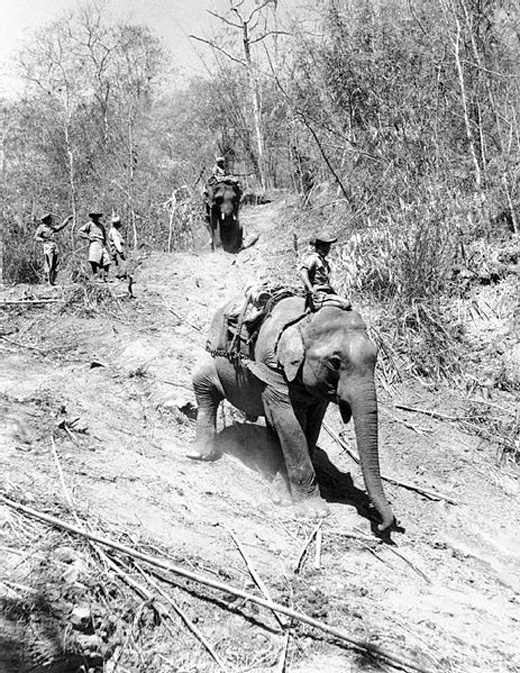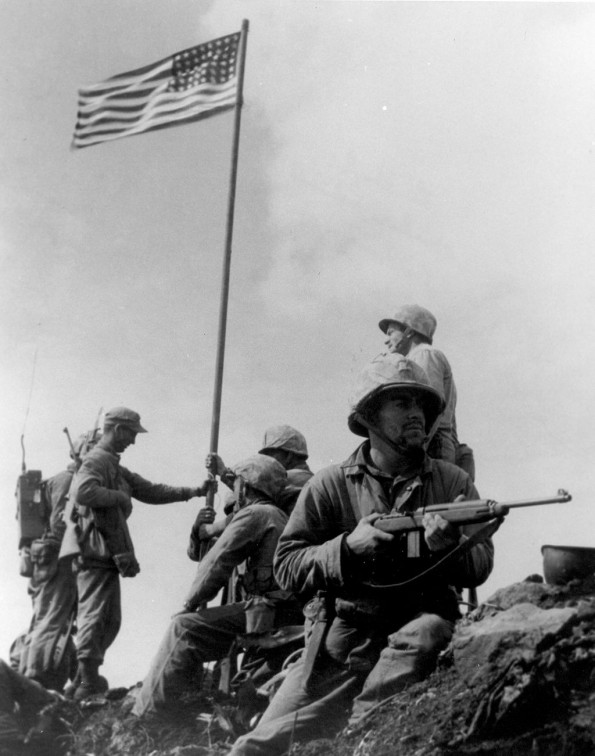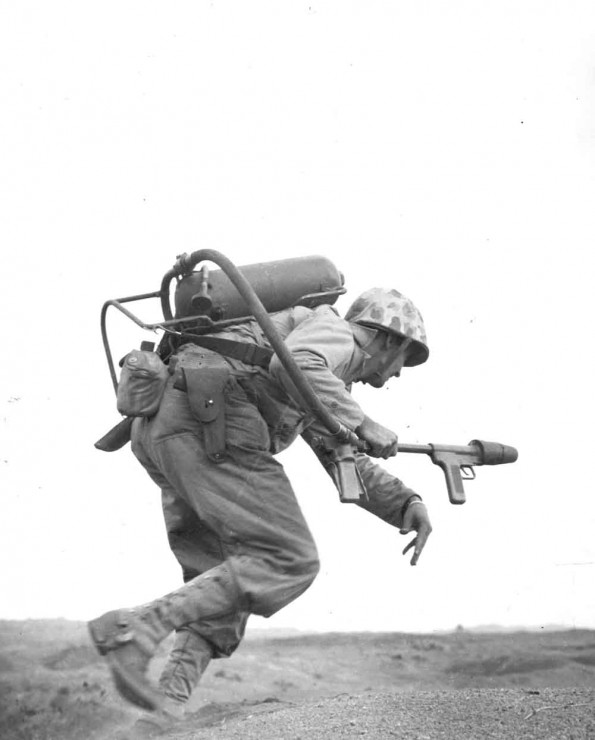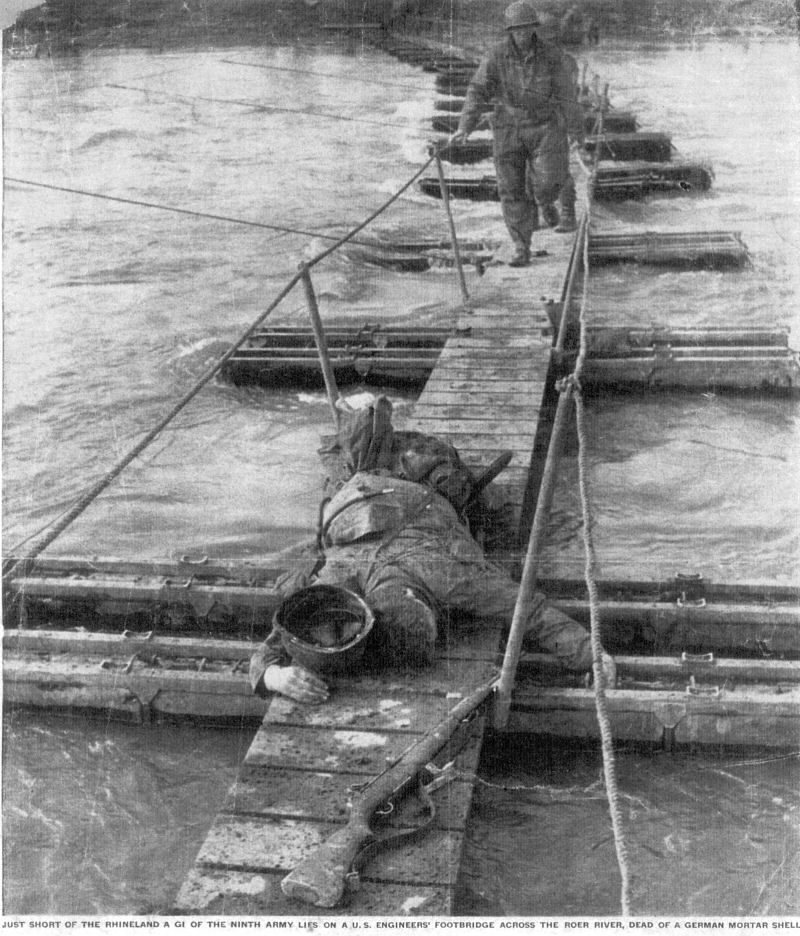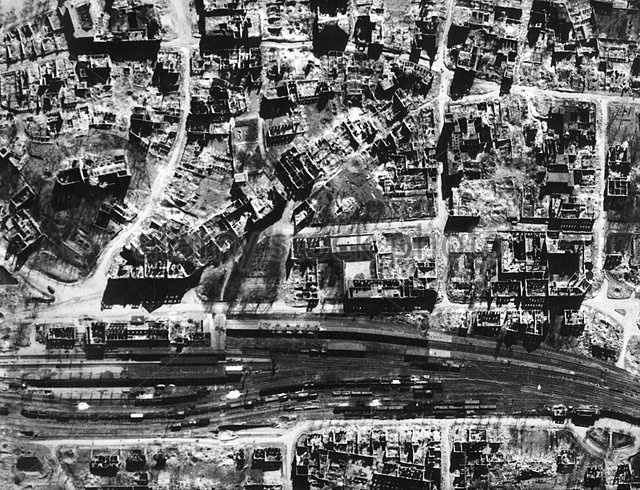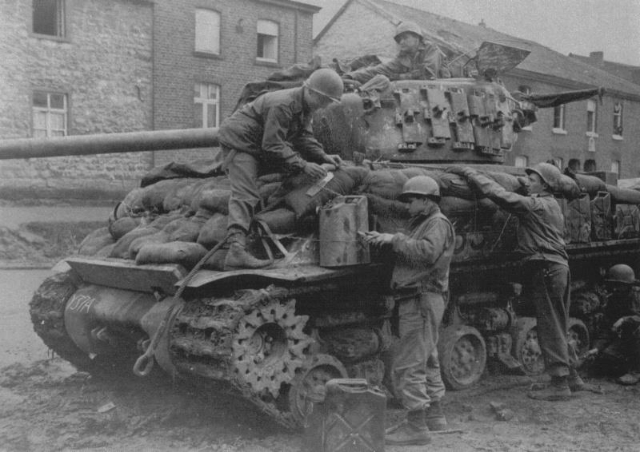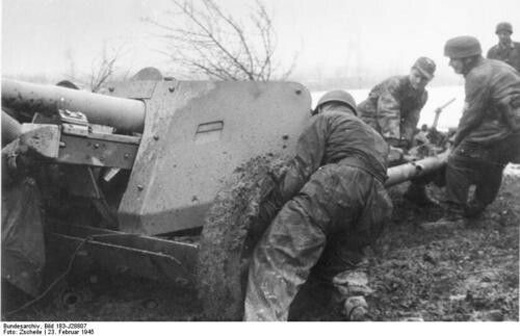Air Operations, CBI
BURMA- 12 10th Air Force B-25s and more than 120 fighter-bombers attack troops, road traffic, and supplies immediately behind the battle fronts.
- More than 20 P-47s support Allied ground forces near Lashio and in the Mongmit area.
- 29 308th Heavy Bomb Group B-24s and 22 14th Air Force fighters dispatched against Shihkiachwang abort in the face of bad weather.
- 5B-24s attack shipping in the South China Sea.
- 8 P-51s attack river traffic between Hankow and Nanking, and rail targets of opportunity near Siaokan.
- 4 P-40s attack targets of opportunity around Kaifeng.
- In their first mission to the area, 9 FEAF B-25s attack a convoy near Camranh Bay and shipping in Phanrang Bay following the discovery of the ships by a 63rd Heavy Bomb Squadron SB-24. Against the loss of 1 B-25 to ships’ fire, the attackers claim 1 Japanese submarine chaser sunk and 1 other escort vessel and 1 freighter damaged by direct hits.
Air Operations, East Indies
- XIII Bomber Command B-24s attack the Lahat Datu, Miri, and Sandakan airfields on Borneo.
- V Fighter Command P-47s attack the Jesselton airfield on Borneo.
Air Operations, Europe
RAF BOMBER COMMANDDaylight Ops:
- 342 aircraft including 297 Halifaxes, 27 Lancasters and 18 Mosquitos of Nos. 4, 6 and 8 Groups are sent to Essen. The target area is cloud-covered and all of the bombs are dropped on skymarkers. The marking must have been extremely accurate. A German report states that 300 high-explosive and 11,000 incendiary bombs fell on the Krupps works.
- 1 Halifax crashes in Holland.
- 133 Lancasters of No. 3 Group carry out a G-H attack on the Alma Pluto benzol plant at Gelsenkirchen, but no results are seen.
- There are no losses.
- 1 Lightning flies an RCM sortie.
- 367 Lancasters and 13 Mosquitos of Nos. 1, 6 and 8 Groups and a Film Unit Lancaster carry out the first, and only, area-bombing raid of the war on Pforzheim. The marking and bombing, from only 8,000 ft, are particularly accurate and severe damage is inflicted on Pforzheim. 1,825 tons of bombs are dropped in 22 minutes. The post-war British Bombing Survey Unit estimated that 83 per cent of the town's built-up area was destroyed, probably the greatest proportion in one raid during the war.
- 10 Lancasters are lost and 2 more crash in France.
Bomber Command's last Victoria Cross of the war was won on this night. The Master Bomber was Captain Edwin Swales, DFC, a South African serving with No. 582 Squadron. His Lancaster was twice attacked over the target by a German fighter. Captain Swales could not hear the evasion directions given by his gunners because he was broadcasting his own instructions to the Main Force. 2 engines and the rear turret of the Lancaster were put out of action. Captain Swales continued to control the bombing until the end of the raid and must take some credit for the accuracy of the attack. He set out on the return flight but encountered turbulent cloud and ordered his crew to bale out. This they all did successfully but Captain Swales had no opportunity to leave the aircraft and was killed when it crashed. He is buried at the Leopold War Cemetery at Limburg in Belgium.
- 73 Lancasters and 10 Mosquitos carry out an accurate attack on a possible U-boat base at Horten on the Oslo Fjord.
- 1 Lancaster is lost.
- 70 Mosquitos are sent to Berlin, 6 to Worms and 4 each to Darmstadt, Essen and Frankfurt, 22 Lancasters lay mines in Norwegian waters, 13 aircraft make Resistance flights, and there are 25 Mosquito patrols and 54 RCM sorties.
- 4 aircraft are lost: 2 RCM Halifaxes, 1 Stirling on a Resistance flight and 1 Mosquito on the Berlin raid.
- The US freighter Henry Bacon (14,245t), straggling from Scotland-bound Convoy RA-64, is sunk by German planes after her Armed Guard puts up a stiff fight against a large number of attacking aircraft. 7 of the 26-man Armed Guard are killed in the attacks. British destroyers Opportune, Zest and Zambesi rescue the survivors.
GERMANY:
- Continuing Operation CLARION, 1,211 8th Air Force B-17s and B-24s attack numerous transportation targets, both primaries and targets of opportunity.
- 1 B-24 and 5 of 526 VIII Fighter Command escorts are lost.
GERMANY:
- 9th Air Division bombers support the US Army's crossing of the Roer River and projected drive on the Rhine River with attacks on communications centers east of the river.
- 9th Air Force fighters and fighter-bombers provide direct support to the three US field armies, mainly against motor vehicles, locomotives, rail cars, and defended buildings.
- 8th and 9th Air Force fighter pilots down 22 Luftwaffe fighters over Germany between 1330 and 1730 hours.
ITALY:
- 12th Air Force B-25s attack rail targets in and around Brenner Pass.
- XXII TAC P-47s attack airdromes, rail lines, at least five rail bridges, and German Army troop movements.
- During the night, XXII TAC A-20s and A-26s attack three airdromes and marshalling yards at four locations.
AUSTRIA:
- 15th Air Force heavy bombers attack marshalling yards and other rail targets at four locations.
- 15th Air Force heavy bombers attack rail facilities at Udine.
Air Operations, Philippines
- 26 494th Heavy Bomb Group B-24s based at Angaur attack the San Roque on Mindanao.
- V Fighter Command fighter-bombers attack Japanese Army ground defenses and Japanese-held caves near Fort Stotsenburg with napalm, high-explosive bombs, and machine guns at distances of only 1,000 yards from US 5th Army ground troops.
- 5th Air Force aircraft support US Army ground forces throughout Luzon.
- 4 VMF-115 F4Us destroy a Japanese midget submarine at Cebu City by skip-bombing 1,000-pound bombs into it from an altitude of 25 feet. This is the only known submarine sinking by F4U fighter-bombers.
- Airborne and ground elements of the US 11th Airborne Division help in the capture of Luzon’s Los Banos and Laguna de Bay internment camps, in which American and other Allied civilians have been interned since the fall of the Philippines in 1942. In the case of the airborne troops, 10 65th Troop Carrier Squadron C-47s drop 125 paratroopers in an attack precisely coordinated with that of US Army ground troops. A total of 2,147 internees are rescued at the cost of 2 US servicemen killed.
Air Operations, Volcano Islands
- Task Group 52.2 TBMs and FMs provide support for US V Marine Amphibious Corps ground forces on Iwo Jima.
- After its aircraft attack Chichi Jima in the Bonin Islands, Task Force 58 departs the area owing to a lack of fuel. This leads to a shortage of aircraft to undertake all the required assignments, and the Task Force 52.2 escort carrier air groups become spread too thin to provide adequate coverage for all missions.
Arctic
German Ju-88 bombers sink the SS Henry Bacon from the convoy RA-64. This is the last Allied merchant ship to be sunk by German aircraft during the war.
[Diplomatic Relations
Turkey and Uruguay declare war on Germany and Japan.
[Eastern Front
In Poland the Russians finally take Poznan and 23,000 prisoners after a 28-day battle. In Pomerania, German resistance ceases at Arnswalde. In Silesia Ivan S. Konev's troops have largely completed their advance from the Oder north of Breslau on the Neisse. In Breslau the fighting continues. The German garrison of the city will not surrender until the end of the war, despite repeated Soviet attacks.
POLANDThe last pockets of the Posen garrison are reduced by the Soviet 8th Guards Army, 12,000 German troops have been taken prisoner.
HUNGARYAs the Soviet 7th Guards Army abandons its Hron bridgehead, the 6th SS Panzer Army deploys for its offensive agaisnt Soviet forces on the Danube's west bank to secure the Hungarian oil fields.[MORE]
[Iwo Jima
There is still very severe fighting in the central part of the island around Airfield No. 2. The 5th Marine Div, which has surrounded Mount Suribachi, makes very slow progress against the very solid Japanese positions. However, a small group of Marines succeeds in reaching the summit of the mountain and hoisting the American flag there.
US naval vessels damaged in the area this day include the submarine chaser PC-877 due to a collision, the landing craft LST-684 and LST-792 by coastal gunfire, and landing craft LST-716 running aground.
[Pacific
- The Japanese frigate Yaku is sunk by the US submarine Hammerhead (SS-364) off Cape Varella, French Indochina.
- The Japanese submarine chaser No. 35 is sunk bu US Army aircraft in the South China Sea.
Philippines
On Luzon the US XIV Corps, after a methodical artillery preparation lasting several days, opens the final attack against Manila, where the Japanese have fortified themseleves in the Intramuros strongpoint. At first, stupefied by the intense bombardment, the Japanese give ground, but later they counterattack and regain some positions. In the XI Corps sector the Americans are now firmly in occupation of the western part of the island of Corregidor, while the 40th Division launches an attack to liquidate the last Japanese positions left on the Zambales Mountains. Troops of the I Corps, having occupied Pantabangan, prepare to attack as strong contingent of the Japanese 14th Army identified northeast of the Gulf of Lingayen.
Troops of the US 8th Army continues their occupation of the islets northwest of Samar.
In the XI Corps area, two regiments of the 40th Infantry Division attack Japanese forces west o Fort Stotsenburg. The preceding bombing attacks from B-24s have eliminated all organized resistance.
A company of paratroopers from the 511th Parachute Infantry Regiment makes a jump at Los Baños and liberate the 2,147 Americans at the Los Baños internment camp.
[Western Front
The US 9th Army launches Operation GRENADE, the large-scale offensive by the 21st Army Group from the Rur(Roer) to the Rhine. The attack gets under way at 3:30a.m. after a heavy artillery barrage lasting 45 minutes, when the divisions of the XIII and XIX Corps cross the Rur. The Germans are taken by surprise. In order to halt the American advance in this delicate sector they dispatch the Panzerlehr Div and the 15th Panzergrenadiere to the area, detaching them from the northern front. The Rur River is crossed by the US XIII Corps opposite Linnich, 84th Div, and Roerdorf, 102nd Div, and by the XIX Corps in the sector between Broich and Jülich, 29th Div and near Schophven, 30th Div. Also at 3:30a.m. Gen Hodges' US 1st Army launches a general attack eastward across the Rur River, crossing it in the neighborhood of Düren. Farther south, the US 3rd Army crosses the Our and the Saar with units of the XII and XX Corps. Facing this new Allied offensive is Gen Model's Army Group B - from north to south, or about from Mönchengladback to Prüm, the 15th Army under Gen Gustav-Adolf von Zangen, the 5th Panzer Army under Gen Hasso von Manteuffel and the 7th Army now under Gen Hans Felber. In the US 7th Army sector, the 70th Div, XV Corps, strengthens its positions near Saarbrücken.
[Images from February 23, 1945
|
|
|
|
|
|
|
|
